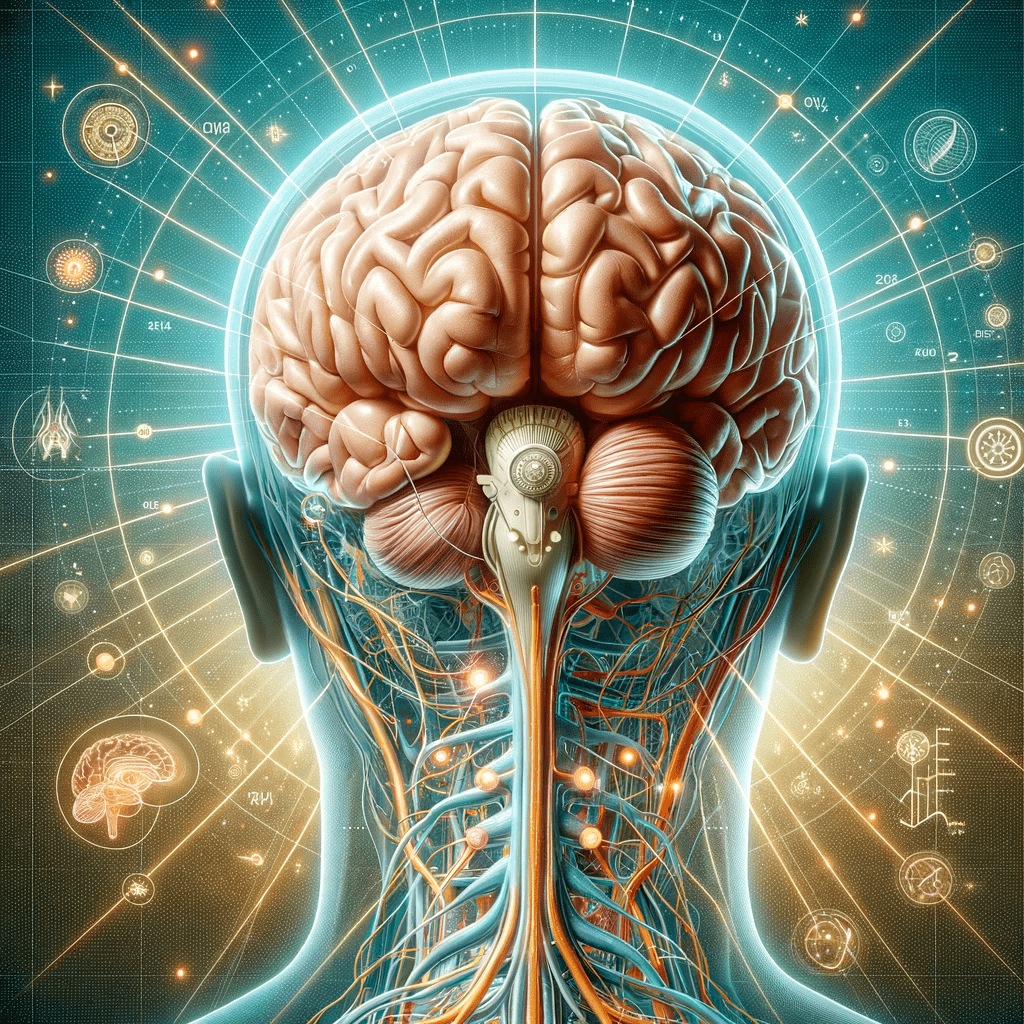The Brainstem

The brainstem is a crucial component of the human brain, playing a vital role in regulating essential bodily functions and connecting the brain to the rest of the body. Located at the base of the brain, it acts as a bridge between the higher brain regions and the spinal cord. The brainstem consists of three main parts: the medulla oblongata, the pons, and the midbrain.
The medulla oblongata, situated at the lowest part of the brainstem, controls vital functions such as breathing, heart rate, blood pressure, and swallowing. It serves as a relay station between the spinal cord and the higher brain regions, transmitting sensory and motor information. The pons, positioned above the medulla, is involved in coordinating movement and balance. It also plays a role in controlling sleep, respiration, swallowing, bladder control, and facial expressions. The midbrain, located above the pons, is responsible for relaying visual and auditory information and regulating eye movement.
The brainstem is essential for survival and basic bodily functions. It controls vital autonomic processes such as heart rate, breathing, blood pressure, and digestion. [Source: “Principles of Neural Science” by Eric R. Kandel, James H. Schwartz, and Thomas M. Jessell]
Damage to the brainstem can have severe consequences on an individual’s health and well-being. Even a small lesion in the brainstem can disrupt crucial functions and lead to life-threatening conditions or significant impairments. [Source: “Clinical Neuroanatomy” by Richard S. Snell]
The brainstem also contains nuclei responsible for the integration and regulation of sensory and motor information. It serves as a conduit for information exchange between the brain and the spinal cord, enabling voluntary movement and sensory perception. [Source: “Neuroscience: Exploring the Brain” by Mark F. Bear, Barry W. Connors, and Michael A. Paradiso]
Experts in neuroscience widely recognize the critical role of the brainstem. They emphasize its importance in maintaining homeostasis and coordinating various bodily functions. These experts emphasize the interconnectedness of the brainstem with other brain regions and the spinal cord to ensure seamless communication and control throughout the body.
“The Human Brain Book” by Rita Carter explores the complex structures and pathways within the brainstem, highlighting its significance in the overall functioning of the brain and body. The book describes the brainstem’s role in controlling vital functions and its connections with higher brain regions.
The concept of a “reptilian brain” or “reptilian complex” refers to an idea proposed by neuroscientist Paul MacLean in the 1960s. MacLean suggested that the brain consists of three main parts: the reptilian complex (also known as the reptilian brain), the limbic system, and the neocortex.
The reptilian complex, according to MacLean’s theory, is the oldest part of the brain and is responsible for instinctual behaviors and basic survival functions. It is believed to be similar to the brain structure found in reptiles. However, modern neuroscience has advanced significantly since MacLean’s proposal, and the idea of a distinct reptilian brain in humans is not supported by current scientific understanding.
The brainstem acts as a bridge between the higher brain regions, such as the cerebral cortex, and the spinal cord. It serves as a relay station for sensory and motor information, allowing communication between the brain and the rest of the body. In terms of consciousness, the brainstem is involved in regulating arousal, wakefulness, and the sleep-wake cycle.
One of the key regions within the brainstem associated with consciousness is the reticular activating system (RAS). The RAS consists of a network of neurons spanning the brainstem, and it is responsible for regulating the overall level of wakefulness and alertness. It filters sensory information and directs attention to relevant stimuli, influencing our state of consciousness.
Damage or dysfunction in the brainstem, particularly in the RAS, can have a profound impact on consciousness. Severe injury or lesions in this area may lead to coma or altered states of consciousness, such as vegetative or minimally conscious states. Conversely, stimulating the brainstem, specifically the RAS, through techniques like deep brain stimulation has been explored as a potential therapeutic approach for certain neurological disorders and disorders of consciousness.
Experts in neuroscience have conducted numerous studies to understand the brainstem’s role in consciousness. However, consciousness itself remains a complex and elusive phenomenon, and its complete understanding is still an ongoing scientific challenge. Researchers continue to investigate the intricate interactions between various brain regions, including the brainstem, the cerebral cortex, and the thalamus, to unravel the neural mechanisms underlying consciousness.
In his book “The Feeling of Life Itself,” neuroscientist Christof Koch explores the relationship between the brainstem and consciousness. Koch looks into the scientific evidence and theoretical frameworks surrounding the brainstem’s contribution to conscious experiences, highlighting the importance of the brainstem in shaping our subjective awareness.
The brainstem is a vital part of the human brain responsible for regulating essential bodily functions, connecting the brain to the spinal cord, and coordinating sensory and motor information. It is widely recognized by experts in neuroscience and supported by extensive scientific literature.


